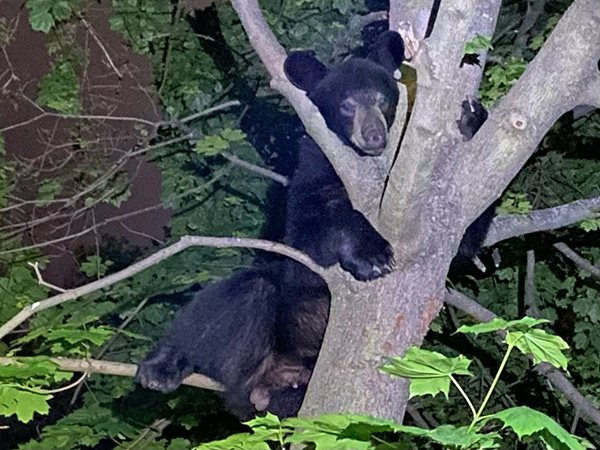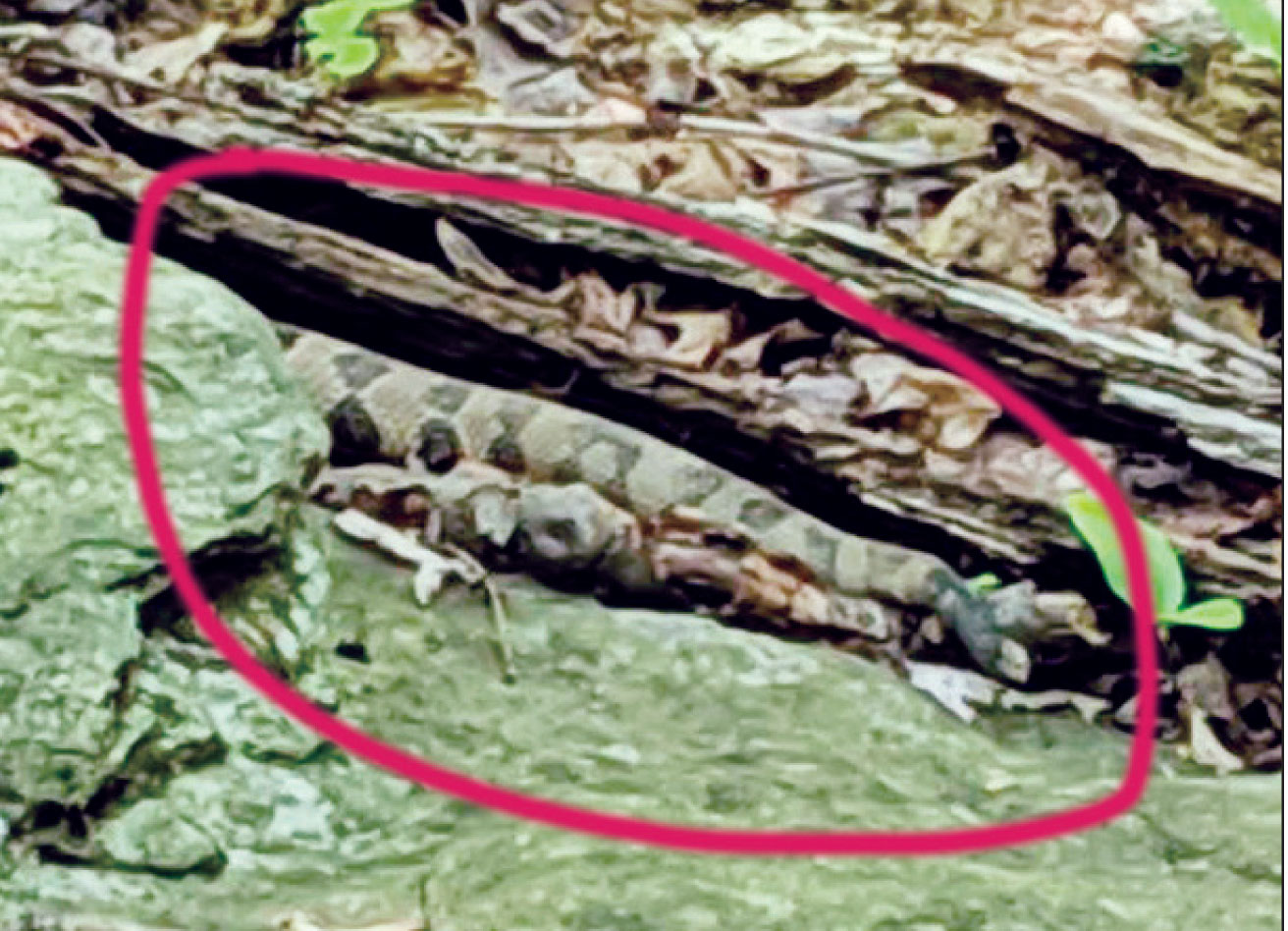James Rada Jr.

Photo of Black Bear on South Altamont Avenue in Thurmont by Bob Delphey
Last month, a young black bear wandered onto the property of a Frederick hotel on Buckeystown Pike and climbed one of the trees. The Maryland Department of Natural Resources sent a team to tranquilize the bear and release him near Gambrill State Park.
Given the nearness of Catoctin Mountain to communities in Northern Frederick County, some residents might catch site of a bear now and again.
If you have a problem with a bear or see one in a populated area, call (410) 260-8888.
Between 2009 and 2019, black bears in Maryland caused an average of 480+ nuisance calls and $18,400 in agricultural damages a year. In addition, vehicles hit around 60 bears a year, which damages the vehicle. Maryland’s Wildlife and Heritage Service created the Maryland Black Bear Management Plan as a framework for conserving Maryland black bears.
Black bears used to be common throughout Maryland, but much of their habitat was lost due to population growth and development. According to the Maryland Department of Natural Resources, only a few bears remained in western Maryland by the 1950s. However, habitat recovery and regional conservation programs have allowed black bears to flourish once again in the state.
The population of more than 2,000 bears is large enough that the state allows a limited bear-hunting season each year in the four westernmost Maryland counties, which include Frederick. The current record holder for a black bear taken in a hunt is Coty Jones. She shot a 615-pound bear with a 21-10/16-inch skull in Garrett County in 2007.
What To Do If You See a Bear
Black bears don’t pose an immediate threat to people, so if you see one, don’t panic. They are wild animals, though, and should be treated with caution and given space. According to the DNR, “If a bear woofs, snaps its jaws, slaps the ground or brush, or bluff-charges: YOU ARE TOO CLOSE!”
Don’t approach the bear or feed him. It is illegal in Maryland to intentionally feed a bear, not to mention being dangerous for both you and the bear.
If a bear stands upright, it is not being aggressive. It is standing to get a better scent of the area. Most bears don’t want to deal with you anymore than you want to deal with them. They will usually leave when they see people.
Other tips from the DNR:
• Don’t crowd the bear. Allow him a means of leaving. Back away slowly with your arms raised up to appear large.
• Have all people and pets go inside to wait for the bear to leave.
• Trash and bird feeders are the most common attractants responsible for luring bears to human dwellings. Pet food, charcoal grills, fruit trees, and gardens may also attract bears. Once a bear finds food around your home, it will likely return.
If You Live In Bear Territory
If you live in an area where a bear may visit, here are some additional tips:
• Reduce garbage odors. Rinse food cans and wrappers before disposal.
• Compost vegetable scraps properly away from house.
• Keep meat scraps in the freezer until garbage pickup day.
• Wash garbage cans regularly and use lime to cut odors.
• Keep garbage cans in a bear-proof container or in an enclosed building until trash pickup.
• Remove bird feeders in the spring. If you persist in feeding during summer, remove seed, suet and hummingbird feeders at night.
• Keep pet food inside.
• Keep barbecue grills and picnic tables clean.
• Use an energized fence to keep bears out of beehives, sweet corn, fruit trees and berry patches. (An energized fence is powered by a low-impedance, high–voltage energizer that provides a short-duration, high-energy impulse.)
• Barking dogs, bright lights and noisemakers will sometimes discourage bears from coming into an area.


